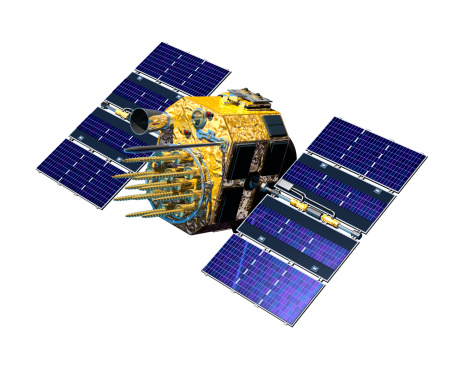GPS Timing
GPS Provides the Timing Reference for Precision Time & Frequency Products

The Global Positioning System (GPS) is a space-based, radio-navigation system that enables extremely accurate positioning, navigation and timing (PNT). Originally designed as a 24-satellite constellation, GPS is currently comprised of 31 satellites (Oct 2018). The system is based on a ground, space, and control segment owned and operated by the U.S. Government as a national resource. The U.S. Department of Defense (DoD) is the "steward" of GPS and responsible for operating the system in accordance with the IS-GPS-200H system specification and, by U.S. law, the Standard Positioning Service (SPS) and Precise Positioning System (PPS) Performance Standards.
GPS Based on Atomic Clocks
Although GPS is used primarily for navigation, the infrastructure is based on extremely accurate atomic clocks. The atomic time standards in the monitoring and control stations, and satellites form a composite clock (CC) that maintain the GPS system time referred to as GPS time. GPS time is a monotonic time scale (i.e. not corrected by leap seconds) referenced to the US Naval Observatory (USNO) Master Clock and steered to Coordinated Universal Time (UTC). The satellite clocks are continuously monitored by Earth-based monitoring stations around the world and at USNO. The control segment uploads the corrections to the satellites at least once per day. GPS system time performance is critical as one nanosecond of clock error results in approximately one foot of position error.
GPS Provides Timing Reference
GPS provides the timing reference for the vast majority of precision time and frequency products and applications today. Commercial GPS receiver modules used in timing applications, typically optimized for navigation and low cost, provide a one pulse-per-second (1 PPS) UTC timing reference. As this pulse is locked to the atomic-time-based GPS signals, it has very good long-term stability but poor short term stability due to environmental, atmospheric, and other effects. Therefore, this 1 PPS reference is not sufficient by itself for precision time and frequency applications.
EndRun's Proprietary GPS Receiver
EndRun uses a proprietary GPS receiver architecture, optimized for time and frequency transfer. Sophisticated software algorithms perform integrity monitoring and frequency control of a high-class quartz oscillator (TCXO or OCXO) or rubidium atomic oscillator. EndRun's advanced timing and adaptive 3rd-order-frequency-control algorithms with Timing Receiver Autonomous Integrity Monitoring (TRAIM) maximize the short and long term stability, accuracy and phase noise of the GPS time and frequency standard's outputs.
This results in a best-in-industry time and frequency reference that can be used in a variety of mission critical applications including communication systems, satellite earth stations, government test ranges, high frequency trading, process automation, power system control, television broadcast, and more. Read about our GPS-Synchronized Time and Frequency Standards and Network Time Servers.
